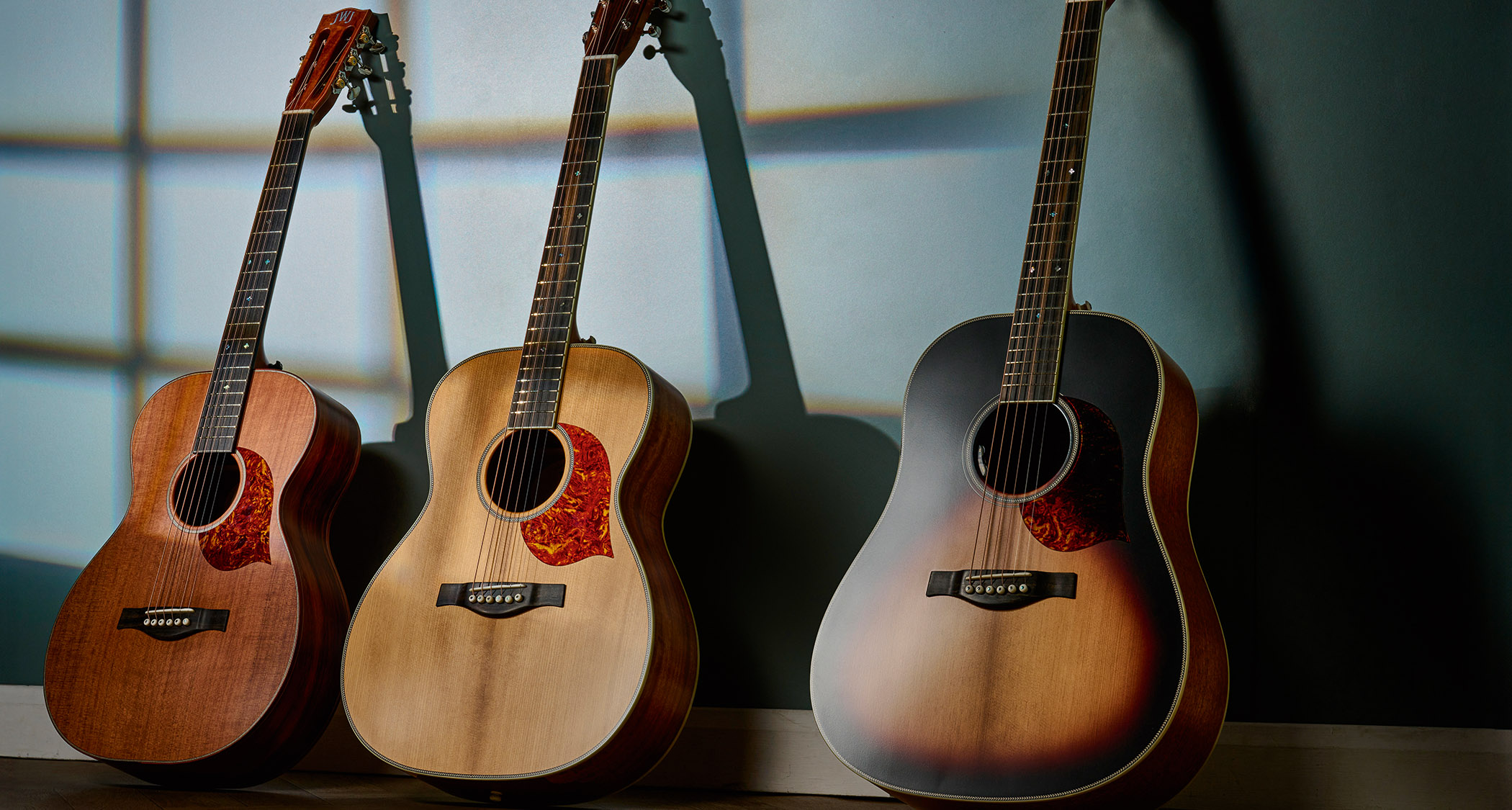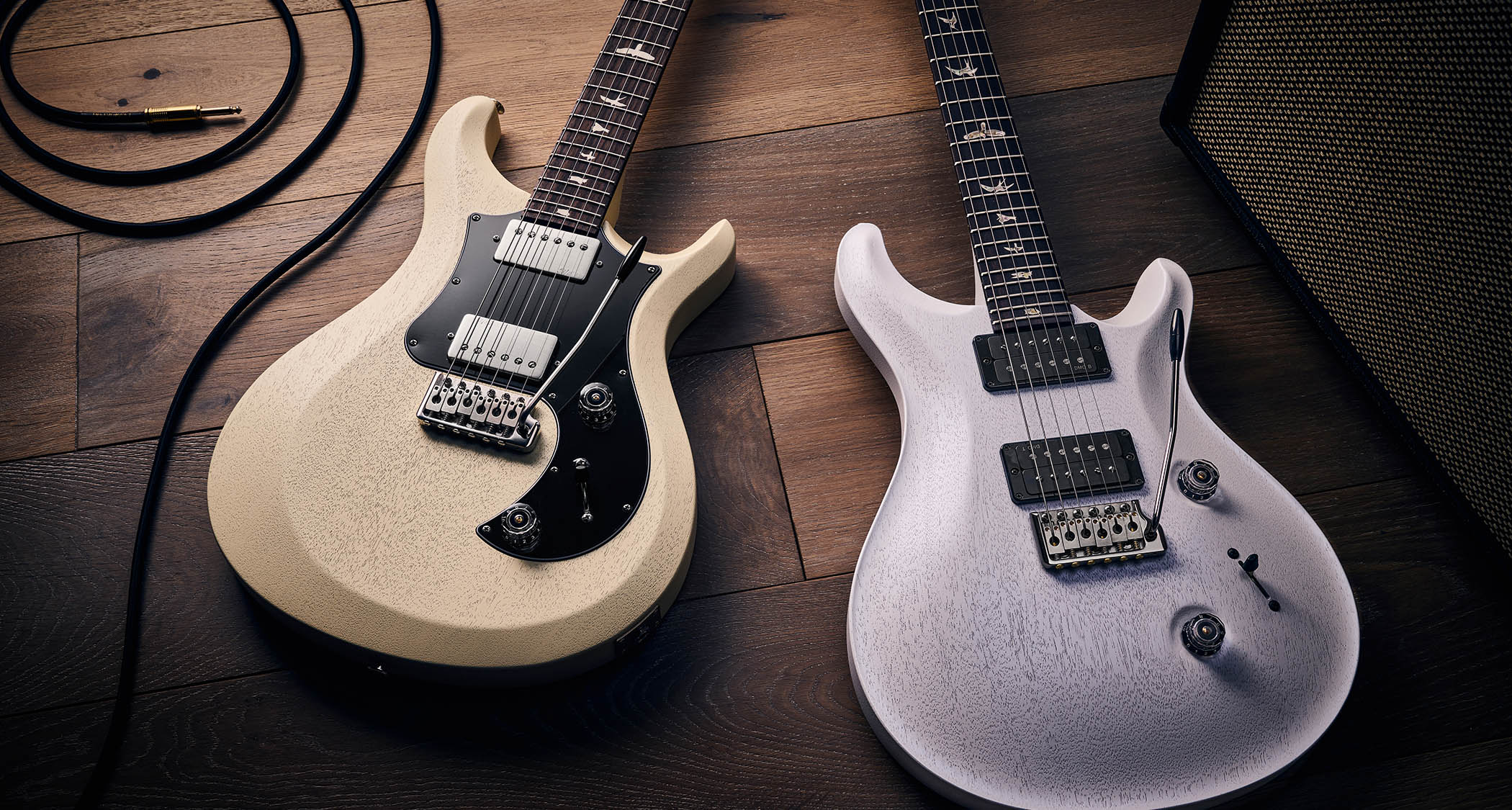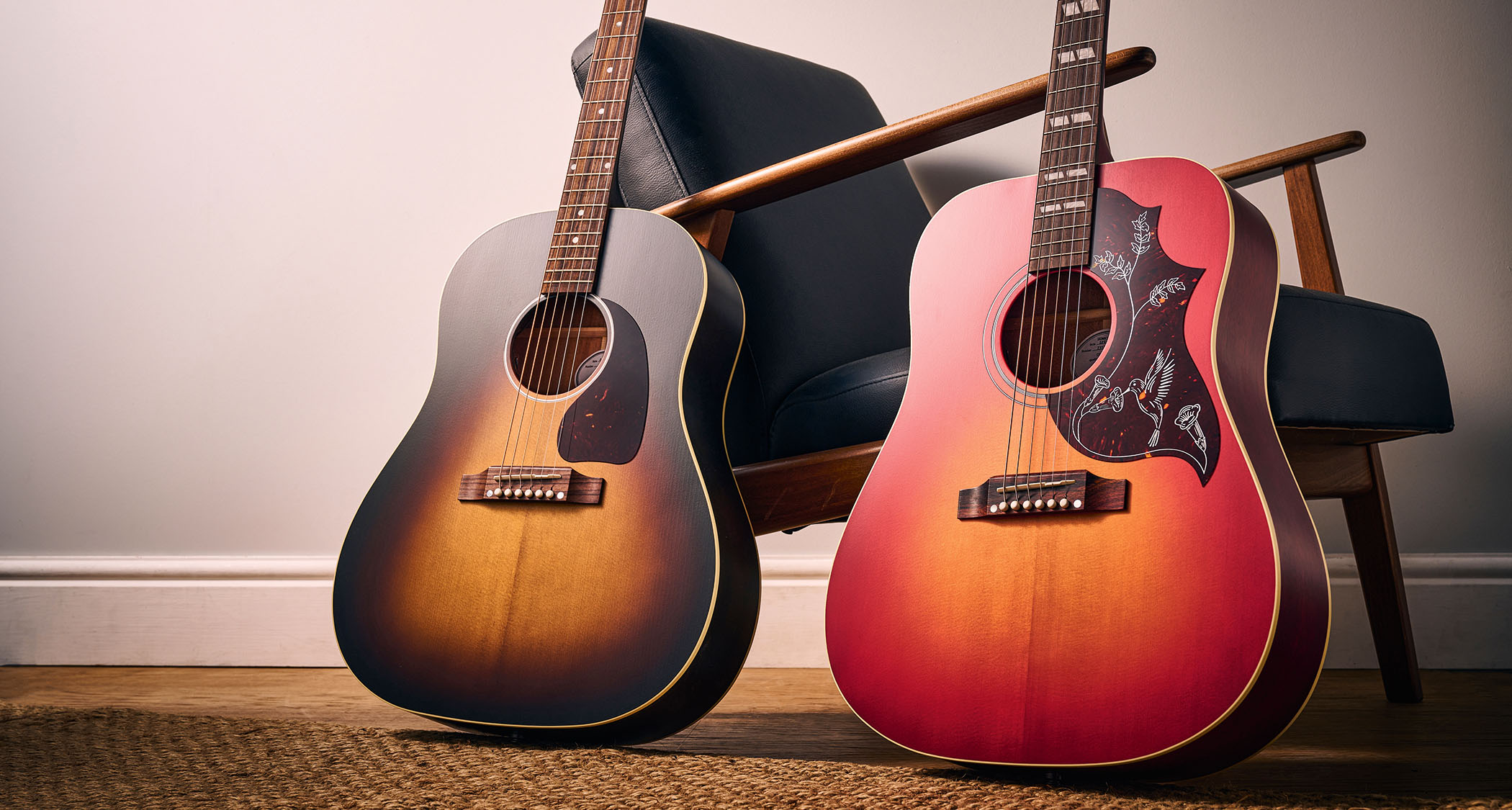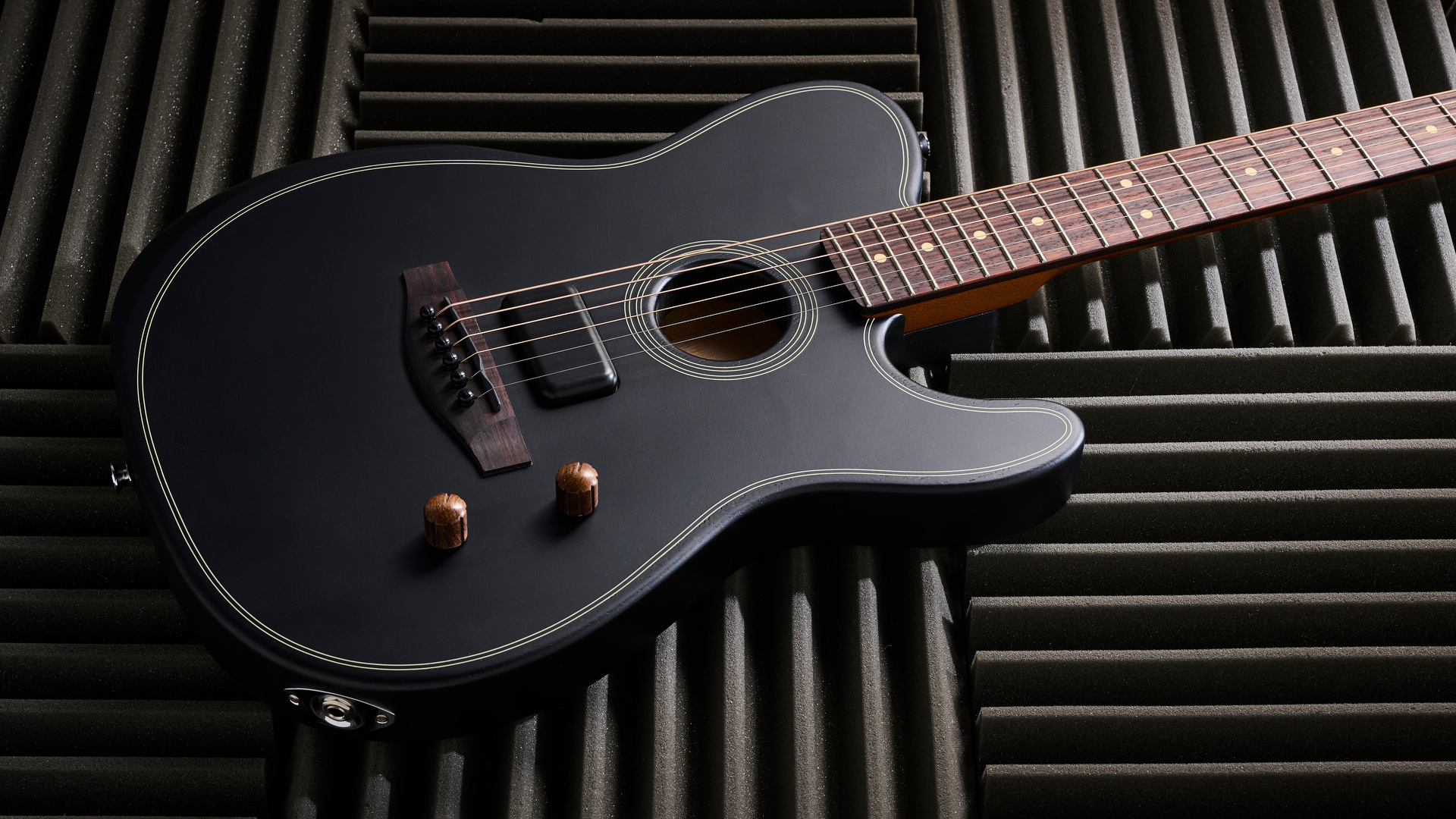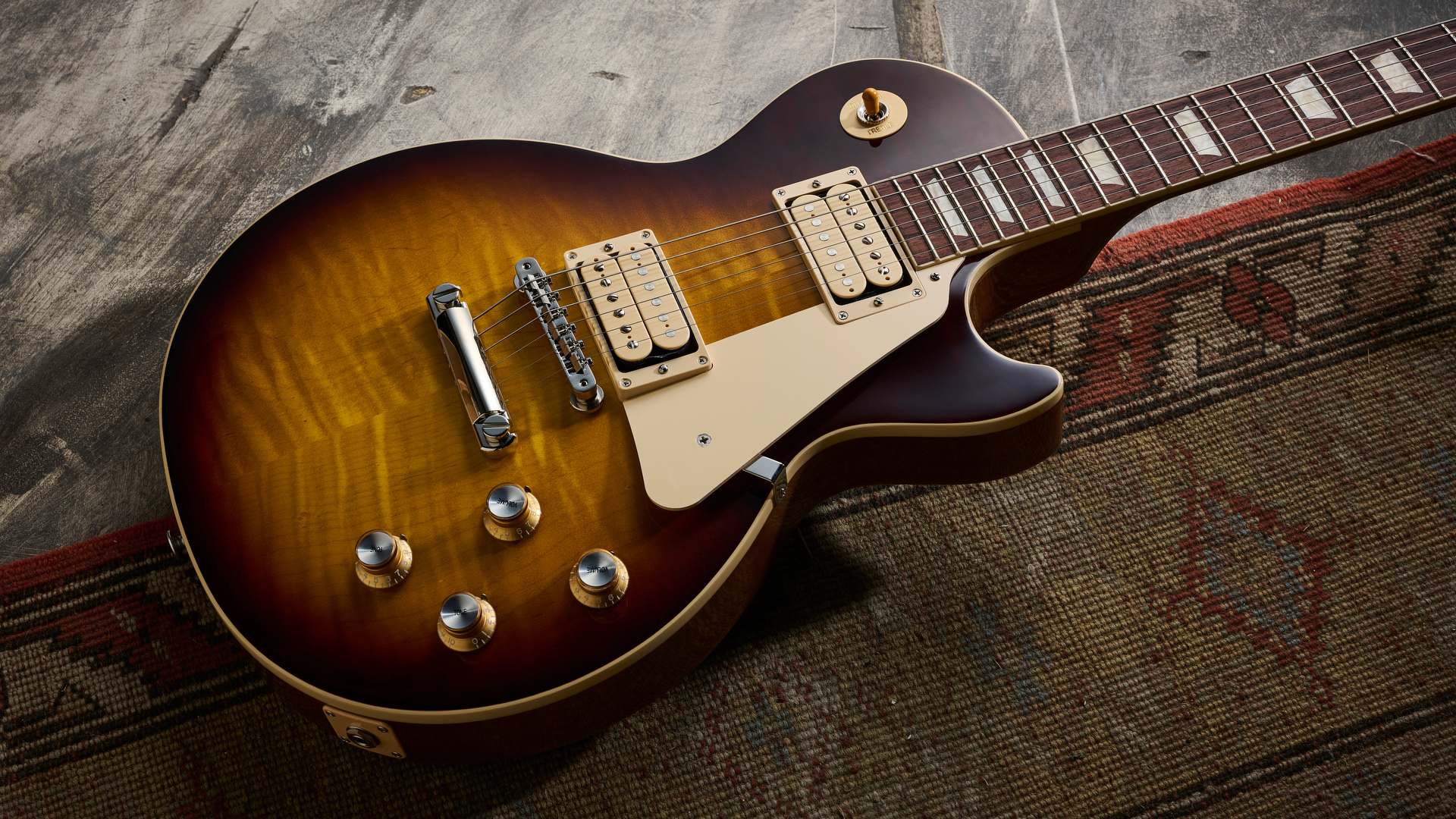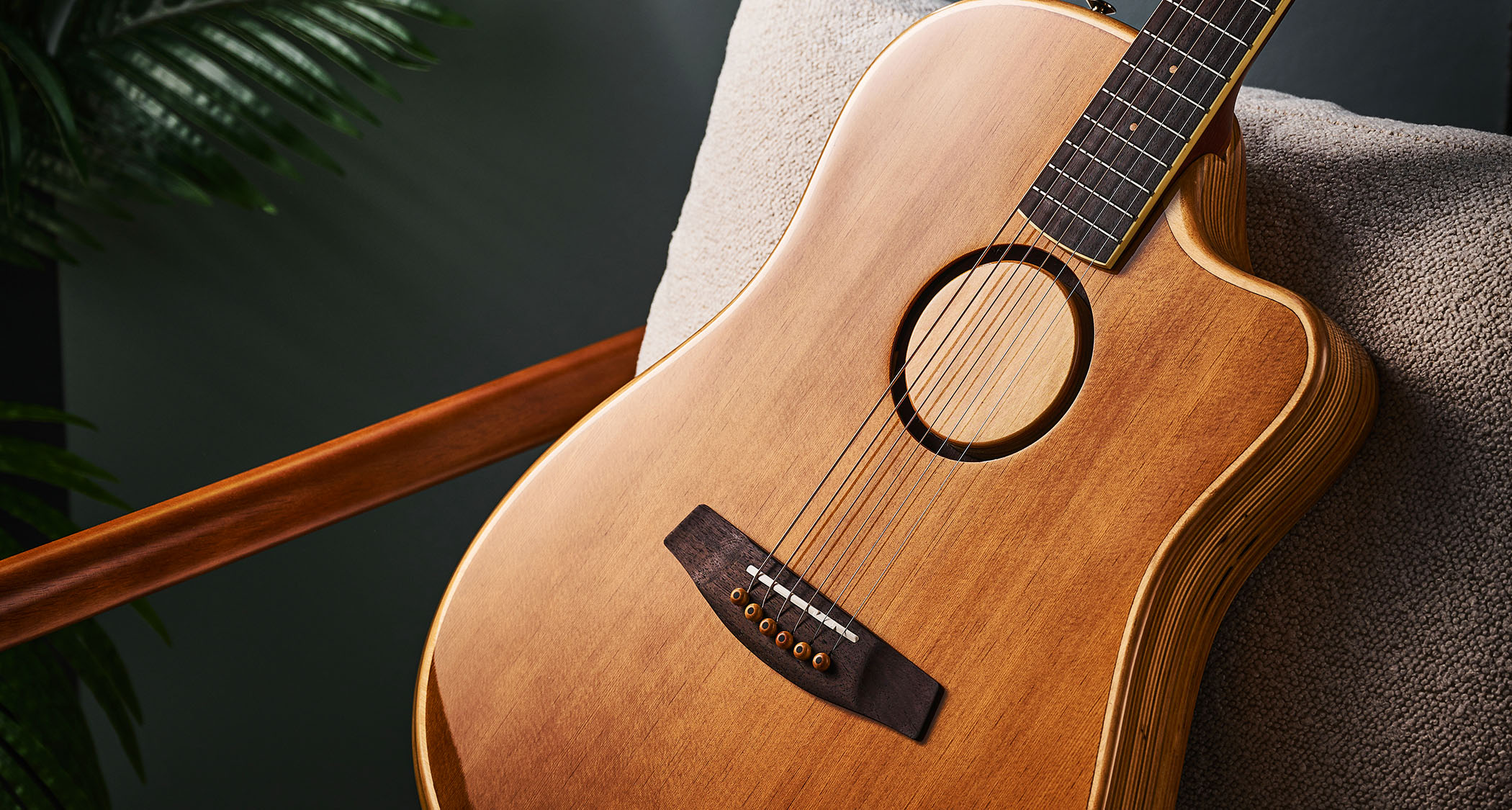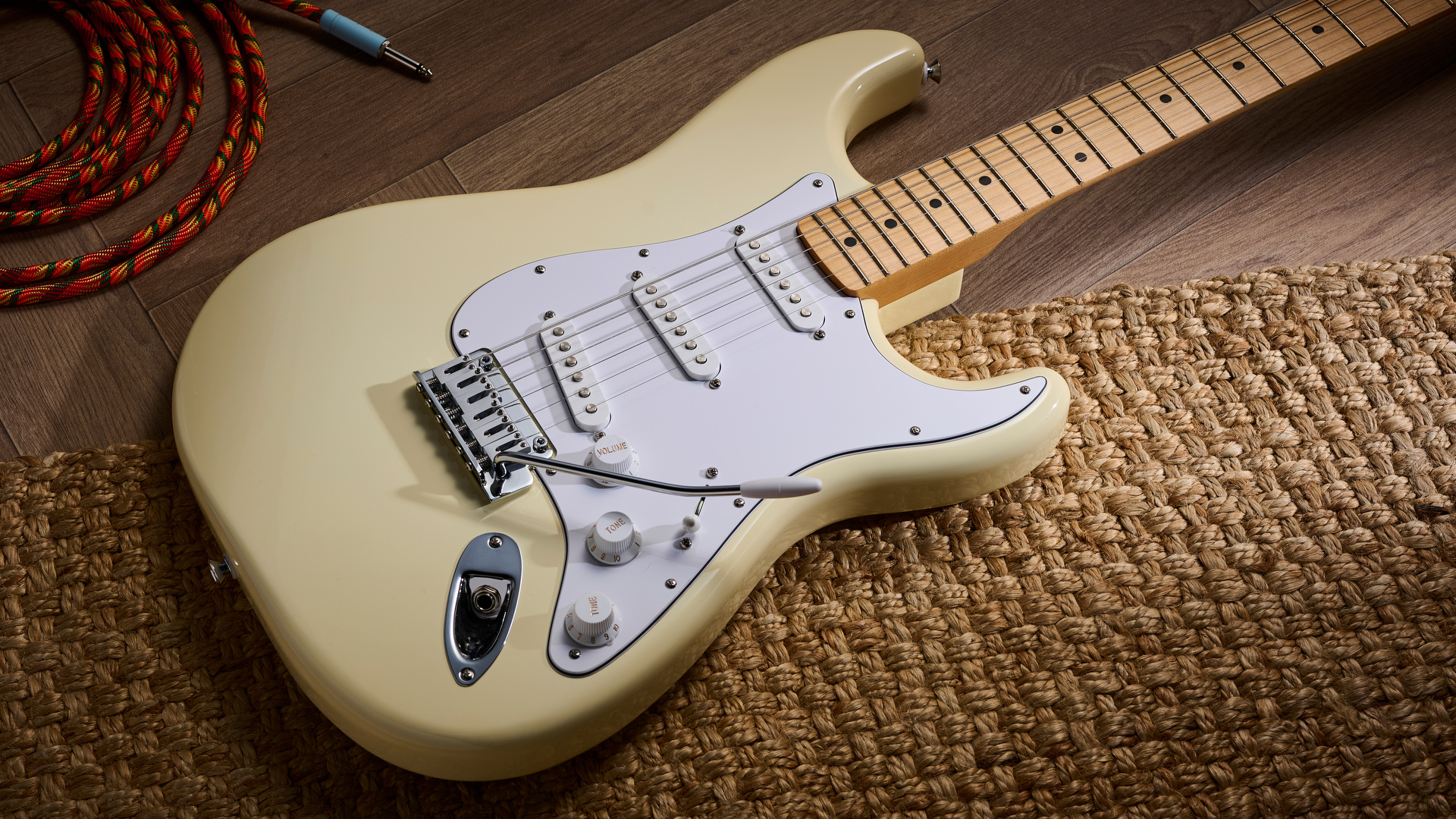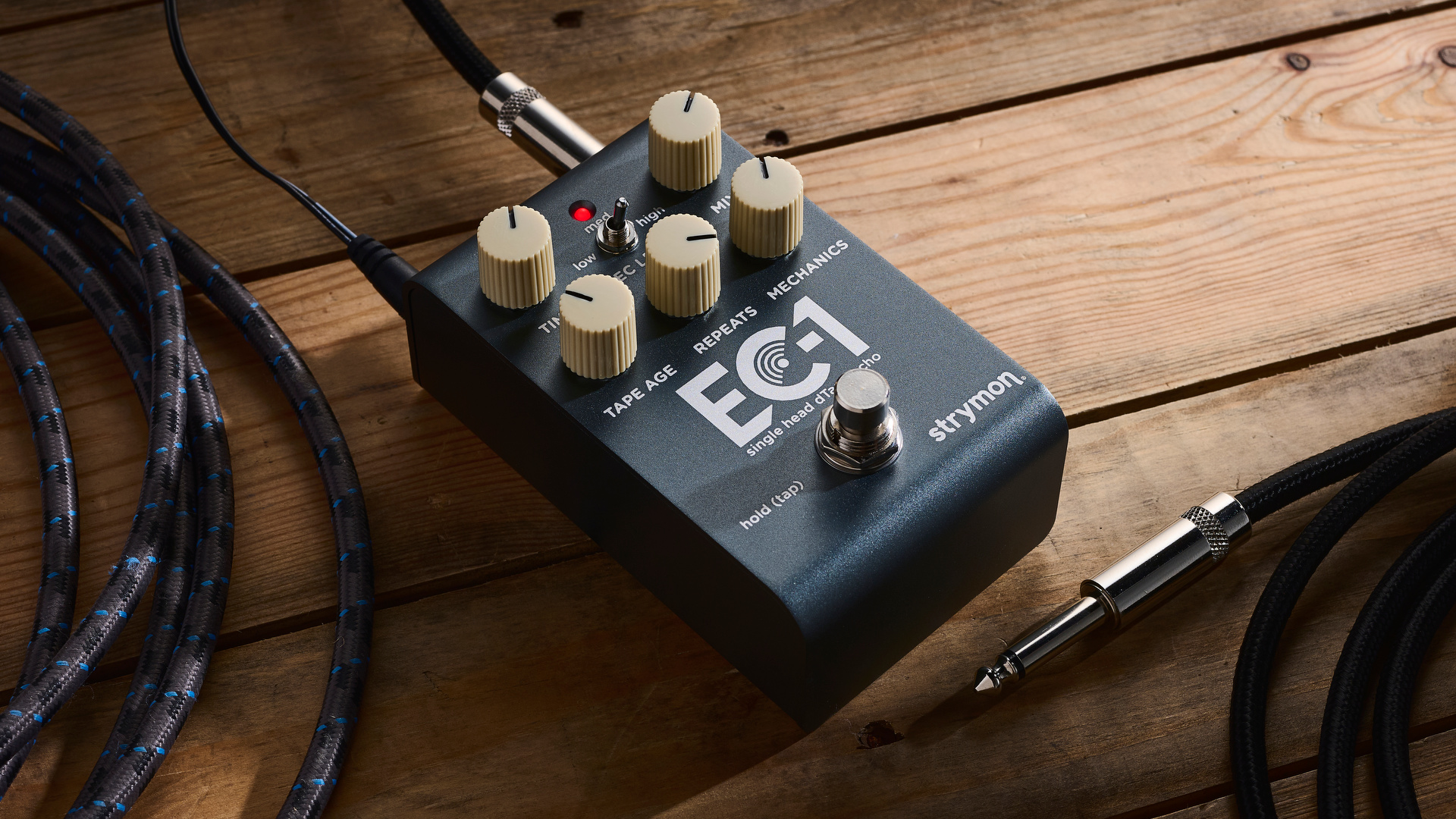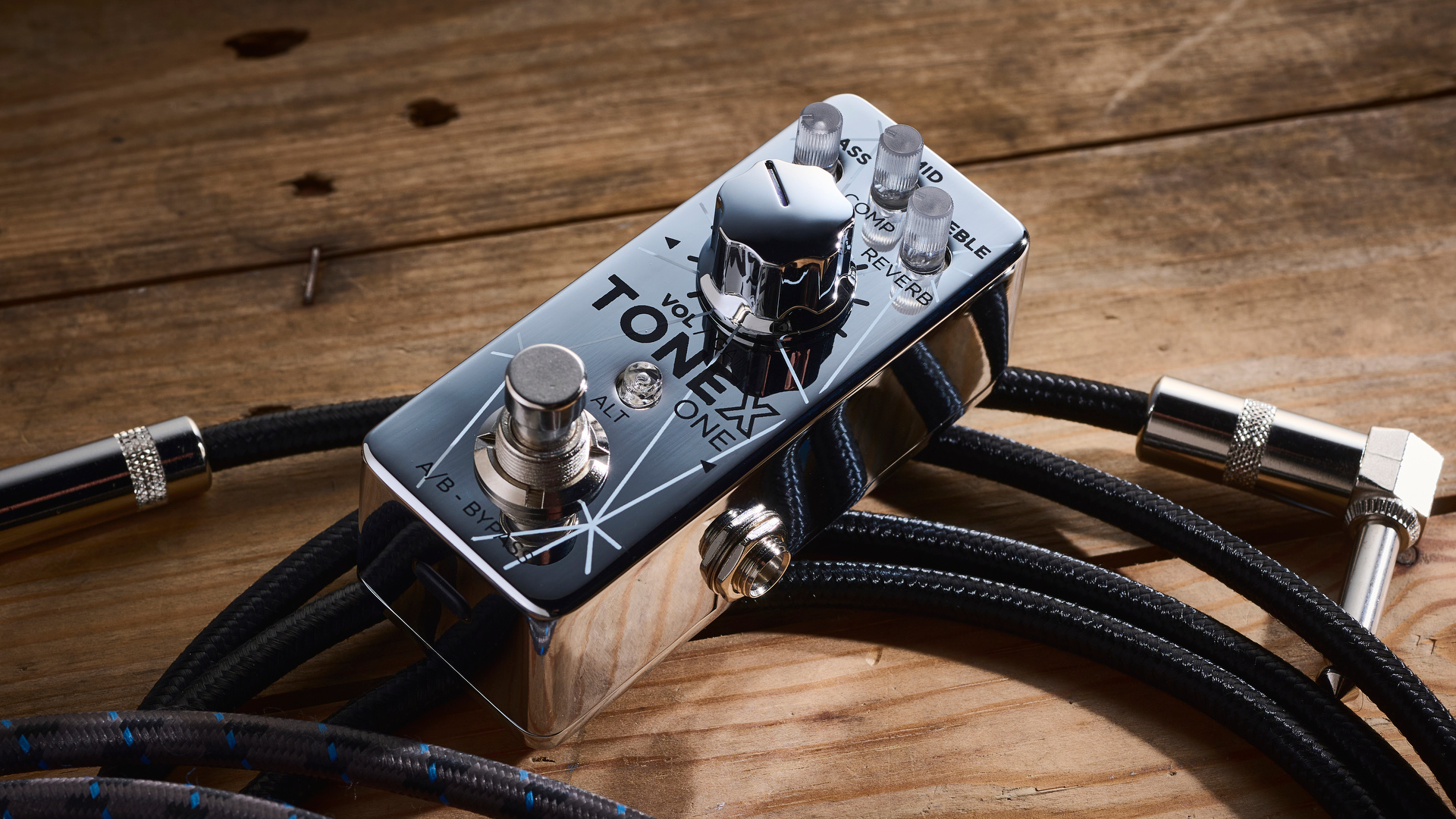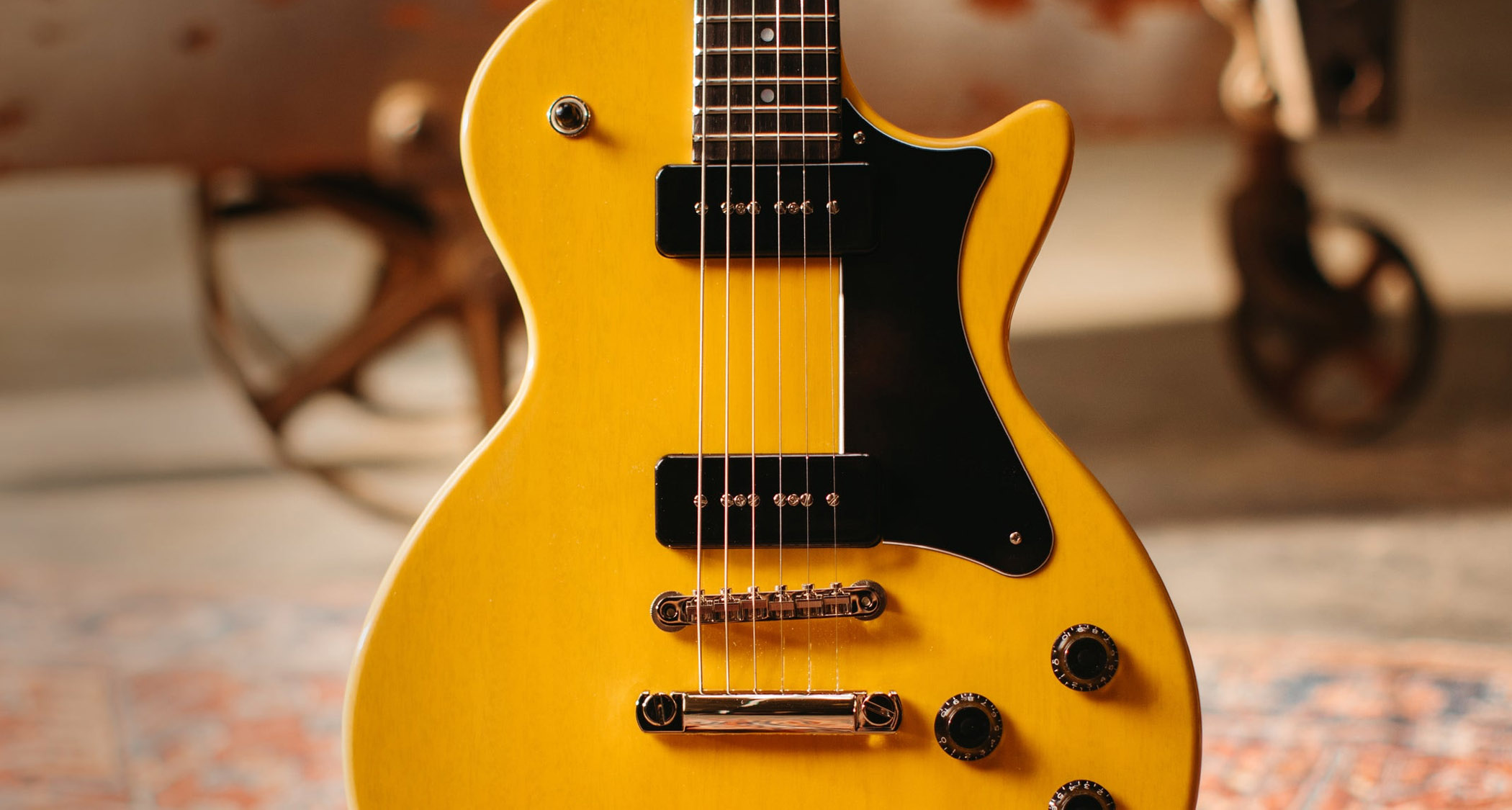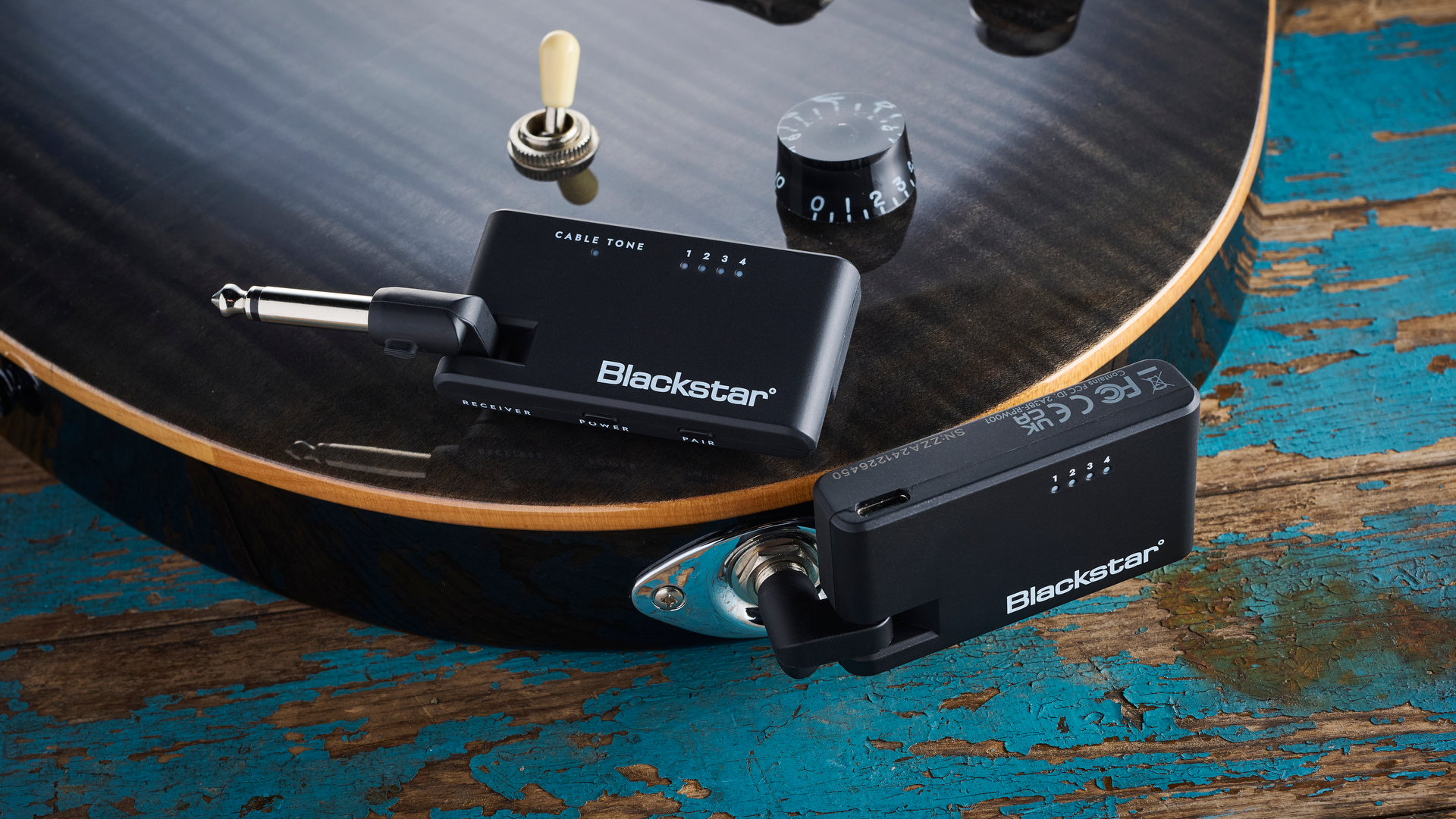Guitar World Verdict
Individually, all three stand up for themselves remarkably well and ex-chef Rich Jones is to be congratulated. If only we could hand out Michelin Stars for guitar-building!
Pros
- +
Great build quality.
- +
Premium tonewoods.
- +
Wonderful sounds.
- +
Slope Shoulder Select has very giggable electric sound.
Cons
- -
Doesn’t quite fit the all-round idea of a parlour body shape, but we really are splitting hairs here.
You can trust Guitar World
What is it?
We’ve sung the praises of Rich Jones’s JWJ acoustic guitars in the past, particularly for the very high-quality build at supremely affordable prices. So we were interested when we heard about his latest range he has on offer – the Select Series.
The reasoning behind the new additions is straightforward. “The idea with a Select Series was to do one guitar of each shape,” Rich tells us. “A slope shoulder, an orchestra and a parlour – essentially what I would choose myself.”
These three shapes chase some of the most familiar acoustic body sizes and, as Rich has said, we have a parlour, moving up to an OM and then on to a dreadnought. Each has a particular set of body woods, but it’s worth knowing that JWJ has a custom side to the business and if any of these wood combos don’t fit your ideal acoustic guitar mindset, then Rich will be happy to adapt with other timbers of your choosing.
For those unfamiliar with JWJ, Rich departed from his original career as a chef after his hobby of building guitars began to grow more towards a full-time enterprise. A one-man band, he builds in a smallish workshop in Shrewsbury, UK, but he will shortly be moving to larger premises as his order book has increased significantly in recent years and he simply needs more space to satisfy customer orders.
For now, it makes sense to look at each of these three acoustics in order of size, beginning with the baby of the bunch, the Parlour. There are plenty of differing images that are brought up when considering the parlour body size.
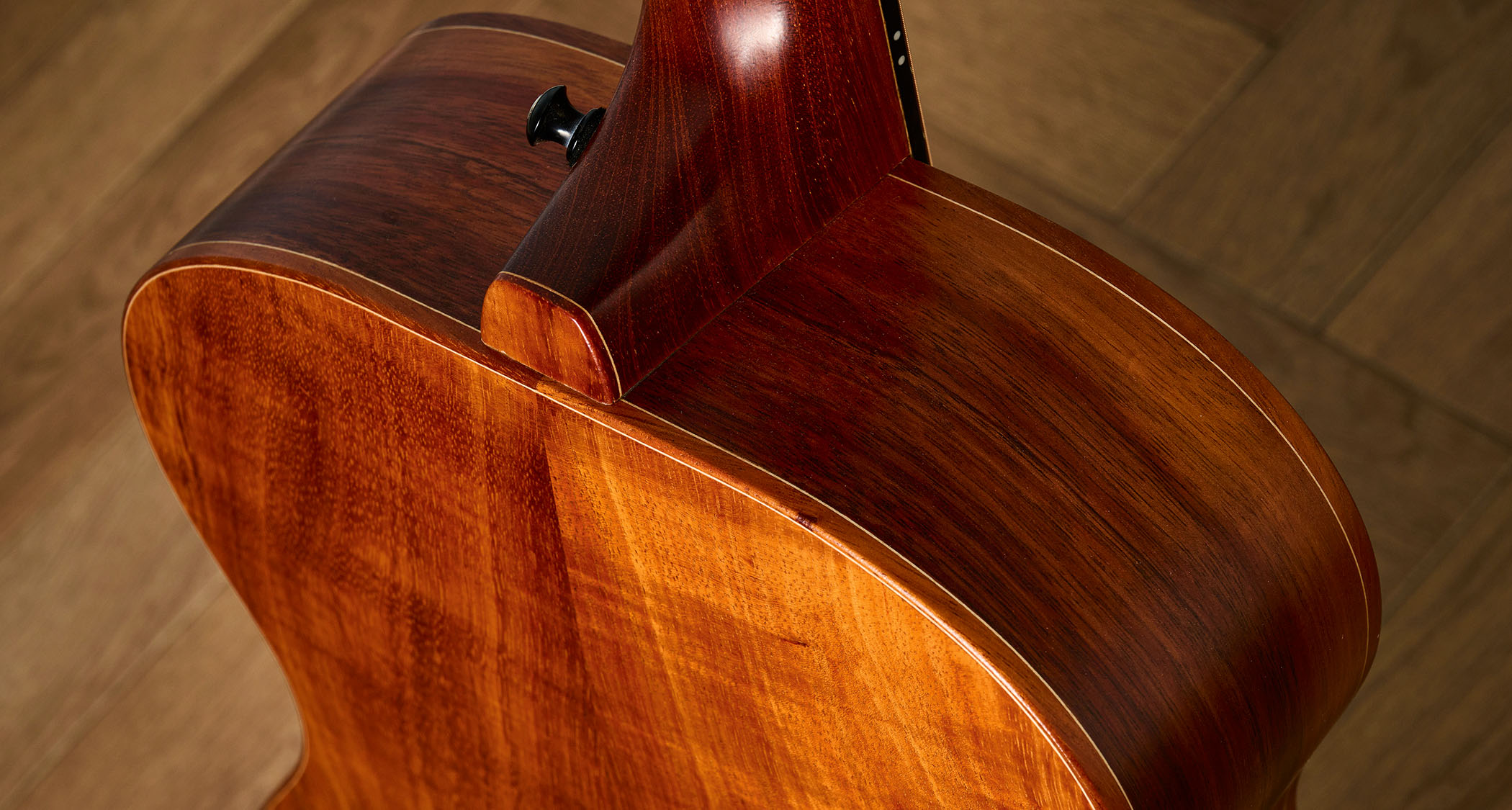
Many will imagine that diminutive and slightly emaciated-looking figure-of-eight shape, but that is far from what we find here. JWJ’s Parlour looks more like a slightly shrunk-in-the-wash OM – or an 00 body size – and has a passing resemblance to what some manufacturers might tag as ‘folk size’, too.
The other departure from what many regard as the norm is that there is a 13th-fret body joint, something we’re seeing more and more frequently. You’d think this might trip you up somewhat when navigating the upper reaches of the fretboard, but we can assure you it doesn’t. In fact, we acclimatised very quickly indeed. But more of what the Parlour is like in action a little later on.
First, let’s consider which ingredients Rich Jones has used in its construction. The top is redwood, with koa for the back and sides: “I wanted to do redwood and koa because that’s my favourite combination on a small body,” Rich says. “I like the warmth of the redwood, the koa works really well with it, and they look fantastic together.”
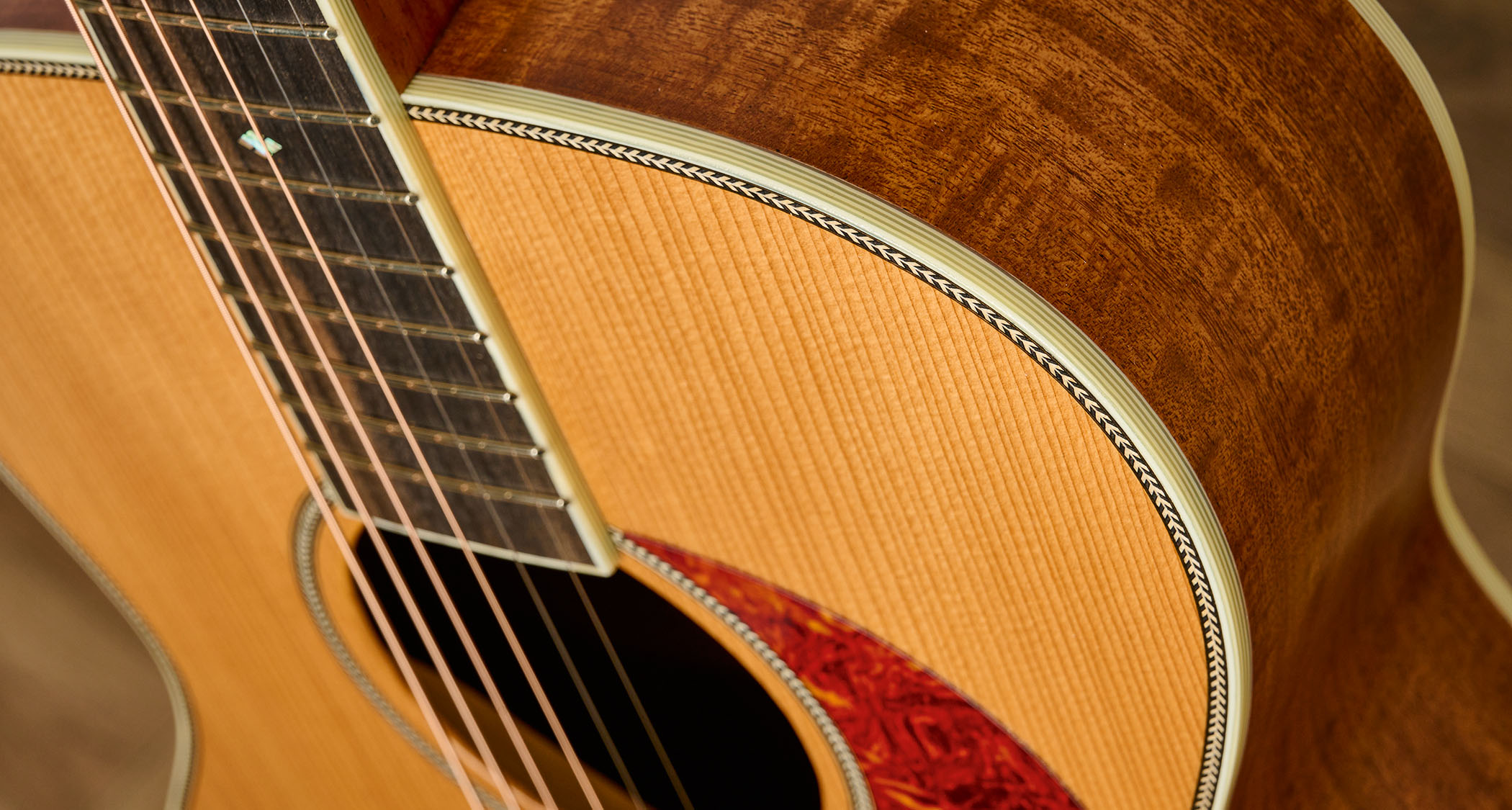
Both timbers are at the more expensive end of the tonewood spectrum and so a decision about cost had to be considered. “I was sort of dancing around with other ideas,” Rich continues, “and in the end I decided, ‘Well, you know what? I’m just going to put the price up on that one a little bit so it is a little bit more expensive,’ but I think it’s worth it to get those woods. And I also really wanted to see a slot head because everybody wants that on the Parlours. It looks great.”
We’d second that because the honeyed high figuring of the koa really does match the dark-reddish hue of the herringbone bound redwood top. Elsewhere, the Parlour has a Honduran mahogany neck with an African ebony fingerboard that’s festooned with abalone inlays. Tuners are Kluson, both nut and bridge saddle are bone, and the guitar is finished in satin nitrocellulose.
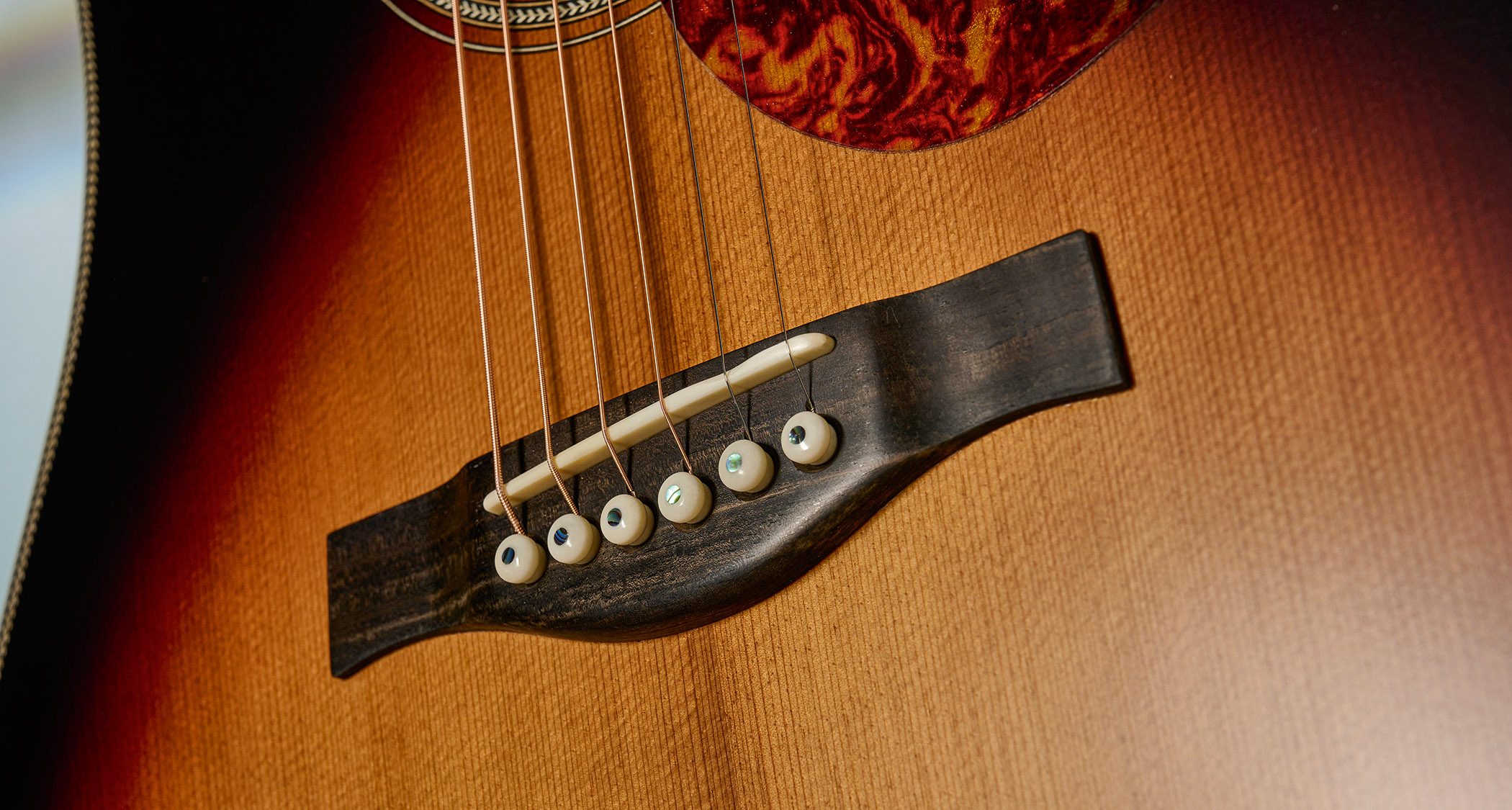
Moving on to the Orchestra, Rich has selected torrified Adirondack spruce for the guitar’s top wood – and for a reason: “With the Orchestra I really wanted to do an Adirondack top,” he says. “There was a guitar I built a few years ago and I only had it for less than a week before somebody bought it.
“It was the first time I’d done a mahogany orchestra with an Adirondack top and I always remember that guitar just sounded incredible. At the time I thought, ‘This is the best thing I’ve done.’ That’s always been on my mind and I’m trying to chase that sound. I love that combination.”
Adirondack spruce is known for having a ‘this one goes to 11’ type of dynamic range, and will take anything from sensitive fingerstyle to abandoned strumming in its stride. Pairing it with Honduran mahogany is an inspired decision, too, as its rich midrange and tight bass response should act as a perfect foil for the Addie.
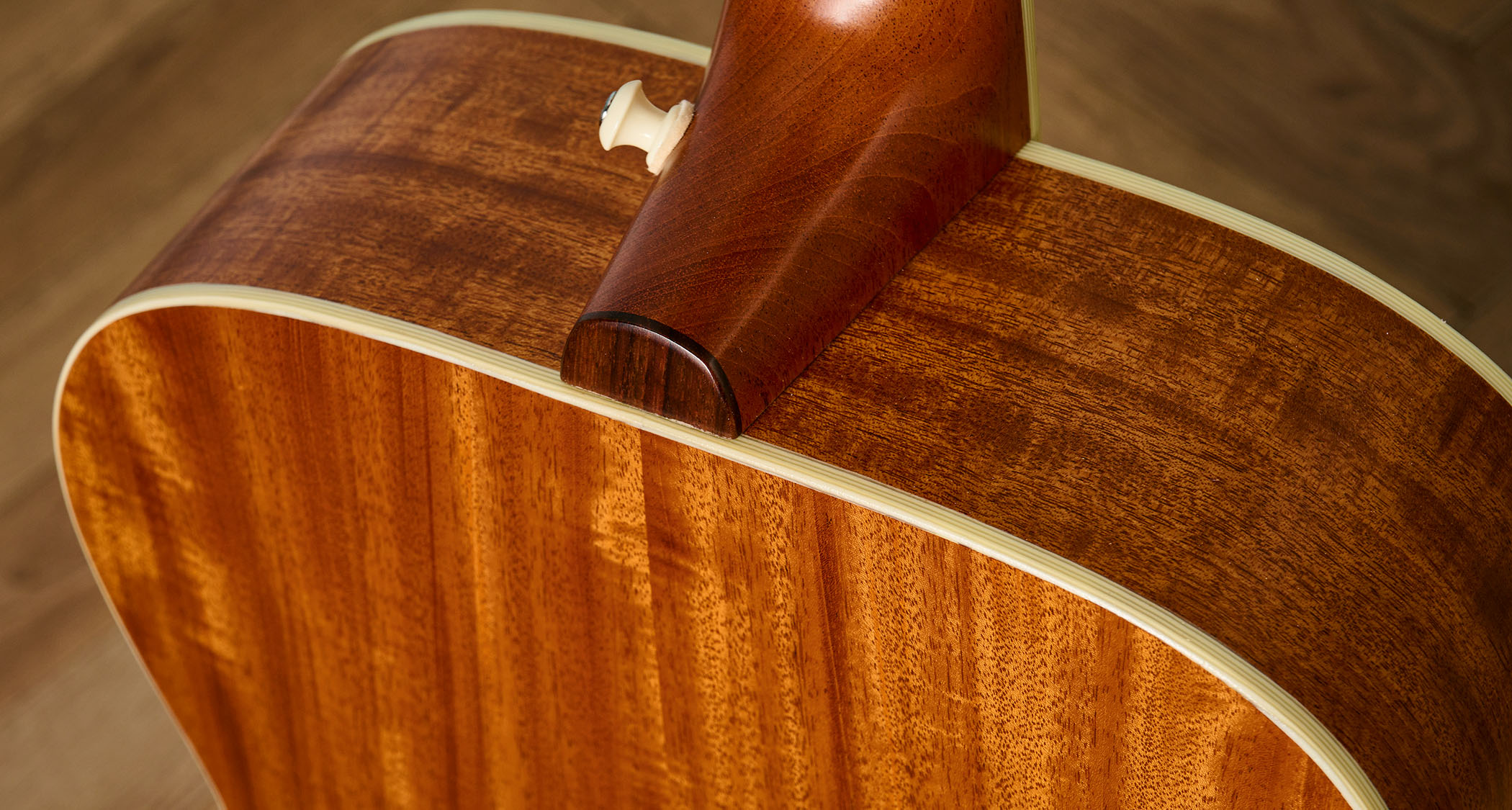
The rest of the Orchestra’s architecture is similar to the Parlour, save that it has ivoroid binding to the fingerboard and front and back of the body, along with the herringbone trim to the latter. But the neck, fingerboard and other body furniture are just about the same spec.
The dark Gibson J-45 type sunburst has been expertly applied and gives the impression that this dread means business
The Orchestra’s mahogany back is very neatly bookmatched – in fact, we had to look very closely to see if there was a centre seam at all. We also reflected that a Honduran mahogany back and sides and Adirondack top at this price point is quite rare, and so JWJ’s bang-for-buck quotient is still very much to the fore. If this guitar sounds as good as we think it will, then the cost of just over £2k is an absolute steal.
The slope-shouldered dreadnought is last to take the stand, and the departure from the decorative finish when compared with the other two is obvious. The dark Gibson J-45 type sunburst has been expertly applied and gives the impression that this dread means business. It’s also been fitted with an LR Baggs HiFi pickup, which is both comparatively new to the market and also new to us as we haven’t previously seen it on any acoustic we’ve reviewed for these pages.
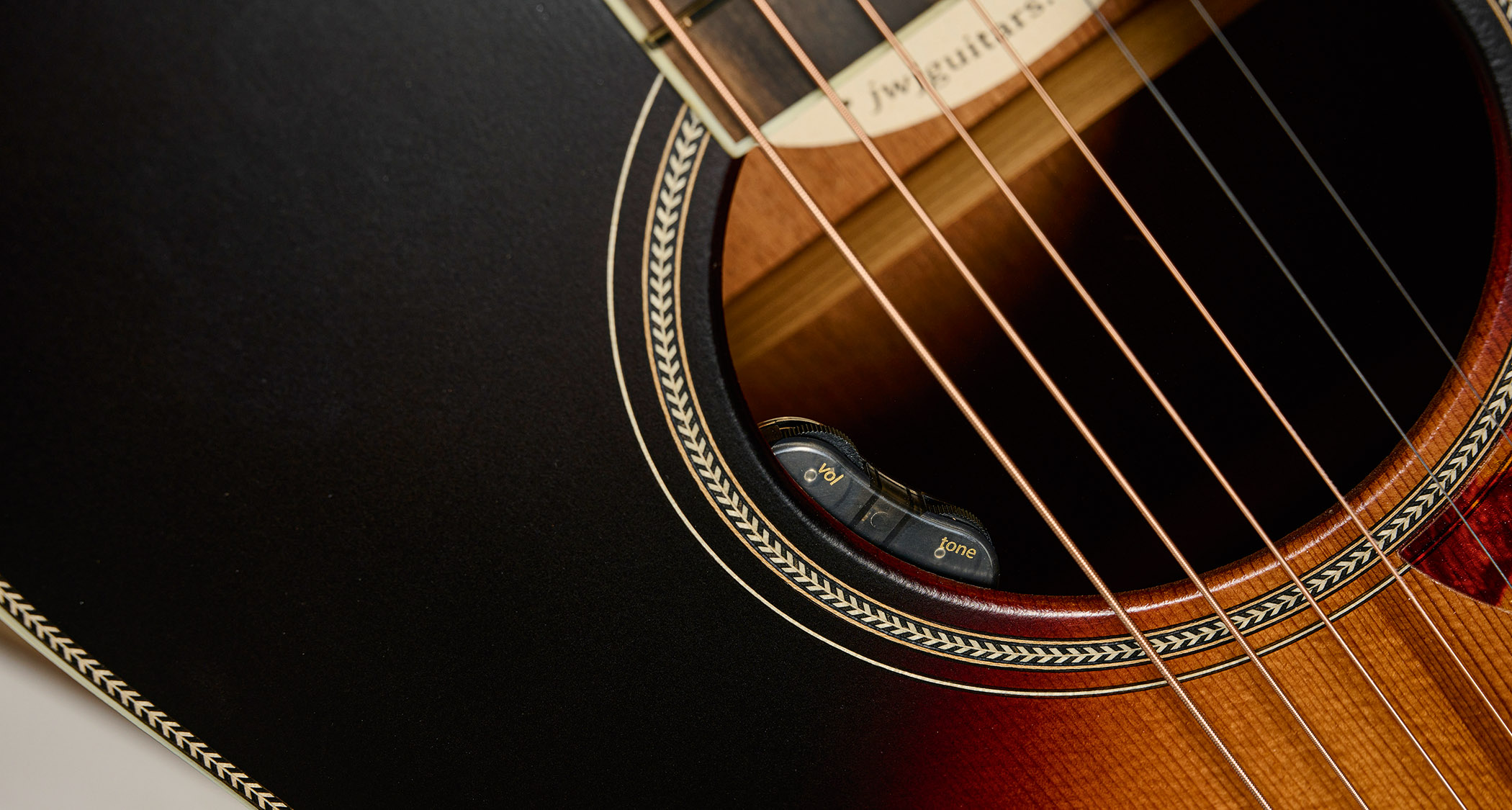
This time the ‘Select’ side of the model name is a little more personal to Rich. “That’s the guitar I generally play,” he says. “I’m a singer, really, a rhythm guitarist, so I generally play a slope shoulder. It’s mahogany and a sunburst Sitka spruce top – that’s kind of it for me. Then the inlays, I just really like those diamond inlays and they go well with the herringbone trim. I love herringbone!”
Once again, the recipe here is a familiar one, with a torrified Sitka spruce top and Honduran mahogany back and sides, which is, again, seamlessly bookmatched. As before, much of the dread’s remaining spec is shared with its siblings. So much for this trio’s ingredients, it’s time for the taste test…
Playability and sounds
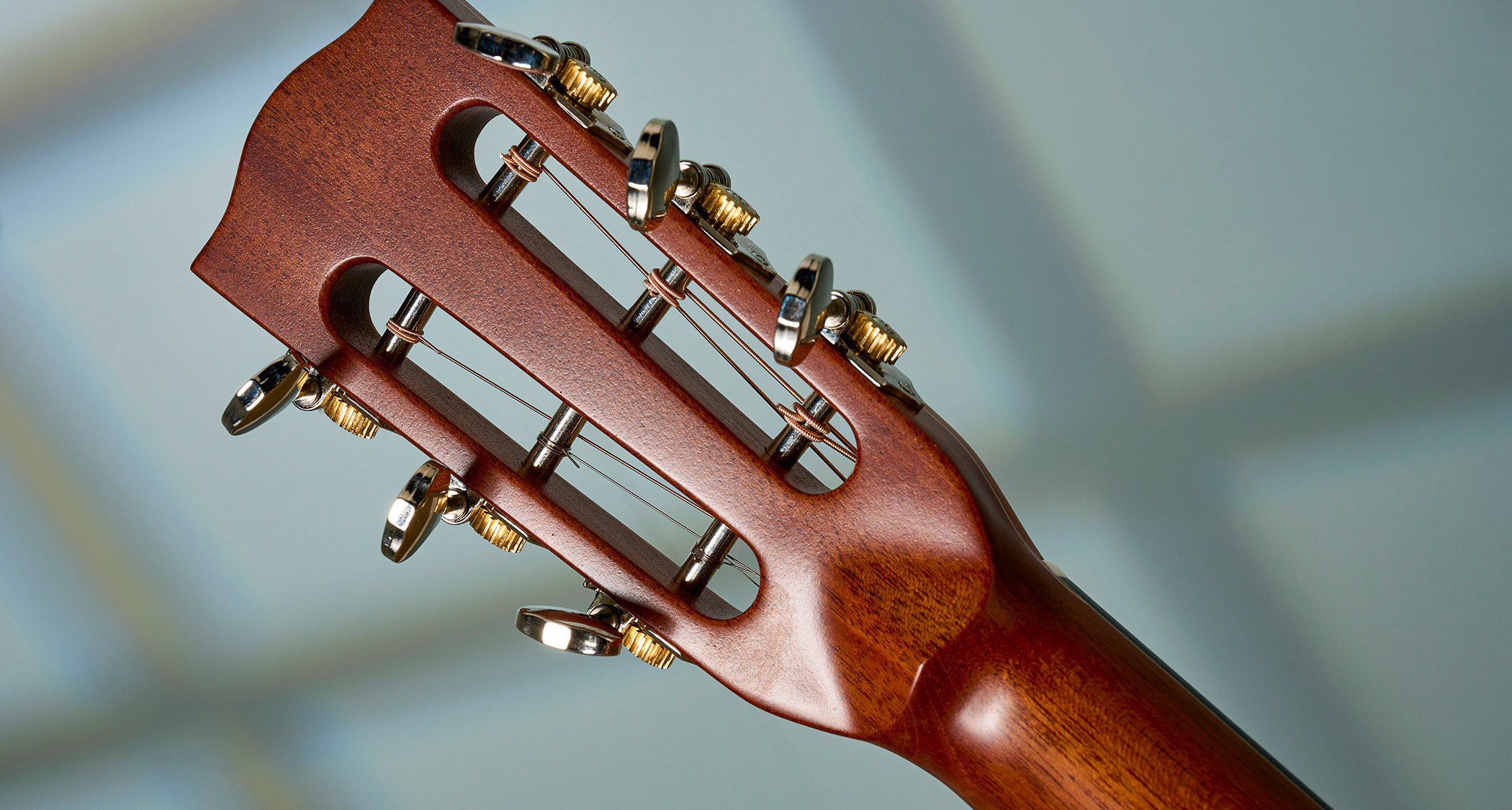
Reversing the order and beginning with the dreadnought, we were reminded how comfortable and fretting-hand friendly JWJ’s neck profiles are. Slightly asymmetrical in build, they fit your hand very well along the length of the neck.
Then we come to the dread’s sound: second only to the mighty jumbo in terms of popular body sizes, the dread is known for its toneful bark, and on the JWJ it really does have all this and more. The basses rumble, but there’s plenty of attack and snap to the upper frequencies, too. Campfire chords ring out boldly and fingerstyle can be anything you choose, from gently ambient to a blues-laced holler.
When we hook it up to our test AER Compact 60, none of this boisterous largesse is lost, and all the pleasing acoustic virtues mentioned above are faithfully reproduced.
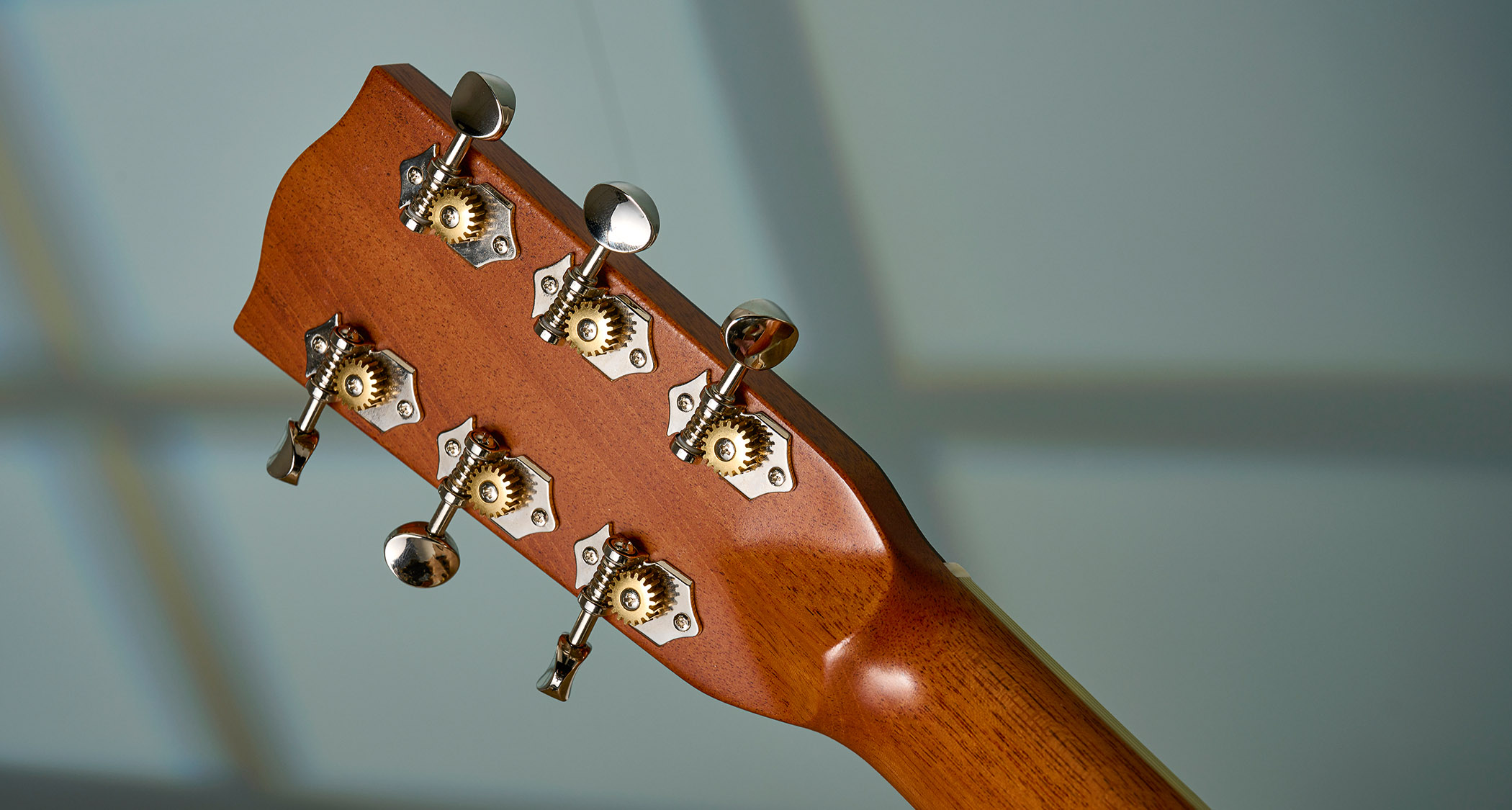
As for the LR Baggs HiFi, we’d say it more than lives up to its name. With volume and centre-indented tone controls inside the guitar’s soundhole, we found we had a more than adequate command over our sound. And the fact that we couldn’t find a bad tone during our endeavours speaks volumes in itself.
The Orchestra raised a few eyebrows in the general vicinity, too. Expecting it to be ‘dreadnought lite’, we were surprised to find all the grunt and volume of the dread was still in place but with perhaps the slightly more polite bass response you’d expect from a smaller body size.
The Adirondack/mahogany combo here is certainly earning its crust as both the dynamic range and the tonal spectrum were at a premium. Once again, chords and fingerstyle were ably dealt with and the sheer musicality of the tone was a real joy. We spent far longer playing the guitar than is strictly necessary for this review, and that in itself tells a story.
Lastly, the smallest of the threesome on review tells pretty much the same story as its two bigger siblings. Naturally, we can’t expect the colossal bass response from a small body, but there’s still plenty there in proportion to the mids and trebles.
Playability is premium and that super-comfortable neck makes the Parlour an admirable choice for a living room companion, and if you were to install a pickup, you may well end up with a fully portable little powerhouse for gigging, too.
Verdict
What can we say? JWJ has done it again with another batch of expertly built, tone-rich acoustics that employ premium tonewoods and top-class workmanship at an almost unbelievable price. And all three tick the accustomed boxes for us in terms of good looks, an easy drive and wonderful sound quality.
Of the three we were particularly drawn to the Orchestra for its all-rounder ability to deliver on many counts
Of the three we were particularly drawn to the Orchestra for its all-rounder ability to deliver on many counts, and the dread proved to be everything you would expect from this body size and more, with the LR Baggs pickup being the cherry on top.
Guitar World verdict: Individually, all three stand up for themselves remarkably well and ex-chef Rich Jones is to be congratulated. If only we could hand out Michelin Stars for guitar-building!
Specs
JWJ Parlour Select
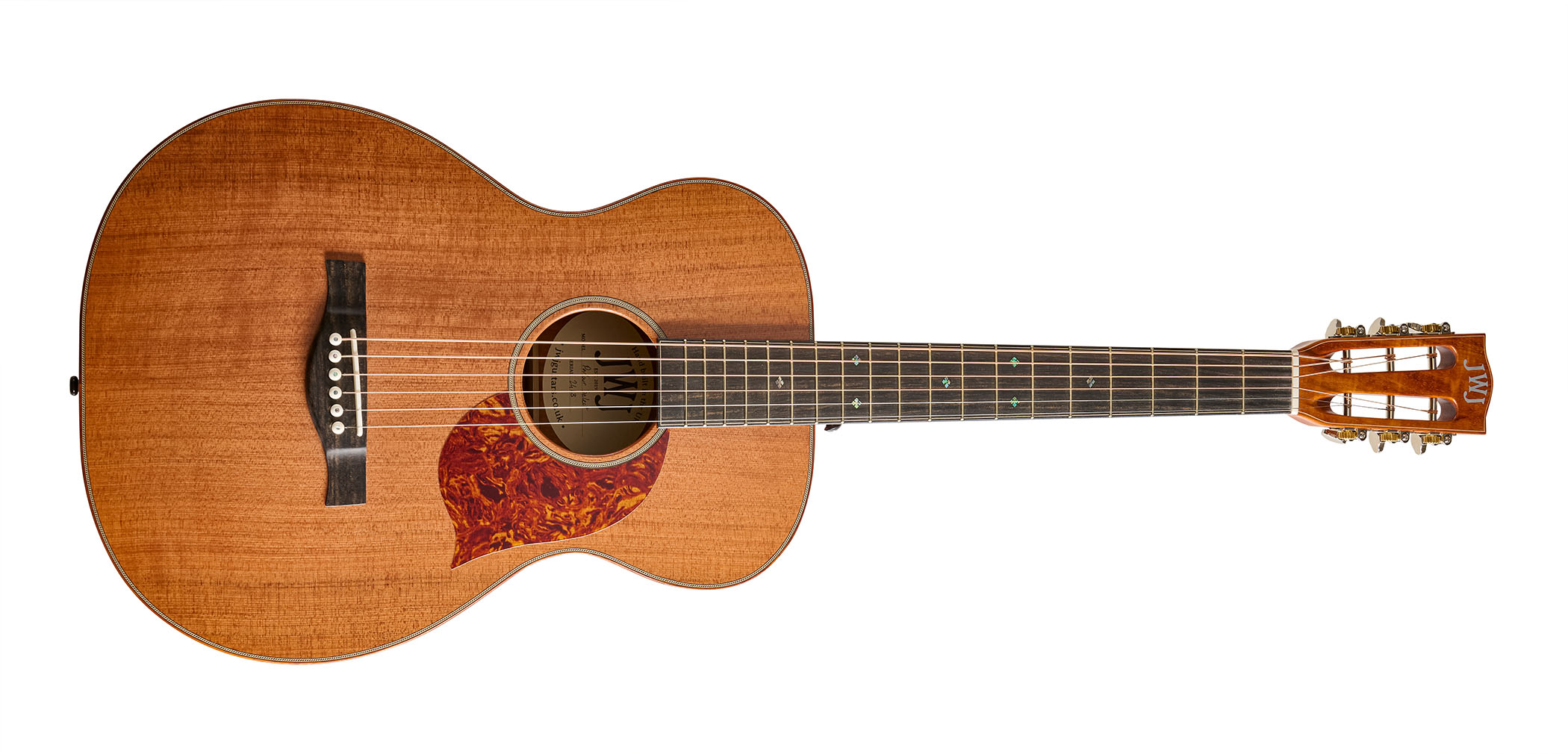
Price: $3,049 approx / £2,445 (inc case)
Origin: UK
Type: Slotted headstock 00-sized acoustic
Top: Redwood
Back/Sides: Koa
Max Rim Depth: 105mm
Max Body Width: 365mm
Neck: Honduran mahogany
Scale Length: 632mm (24.9”)
Tuners: Kluson open back 18:1
Nut/Width: Bone/43.5mm
Fingerboard: African ebony
Frets: 20
Bridge/Spacing: African ebony with compensated bone saddle/57mm
Weight (kg/lb): 1.78/3.92
Options: LR Baggs Hifi Pickup £300, wide or slim neck profiles available on request
Range Options: The Select Series comprises the 3 models on review here. However, we’re sure that Rich Jones would be open to discussing custom options on request
Left Handers: Yes, at no extra cost
Finish: Natural satin nitrocellulose
JWJ Orchestra Select
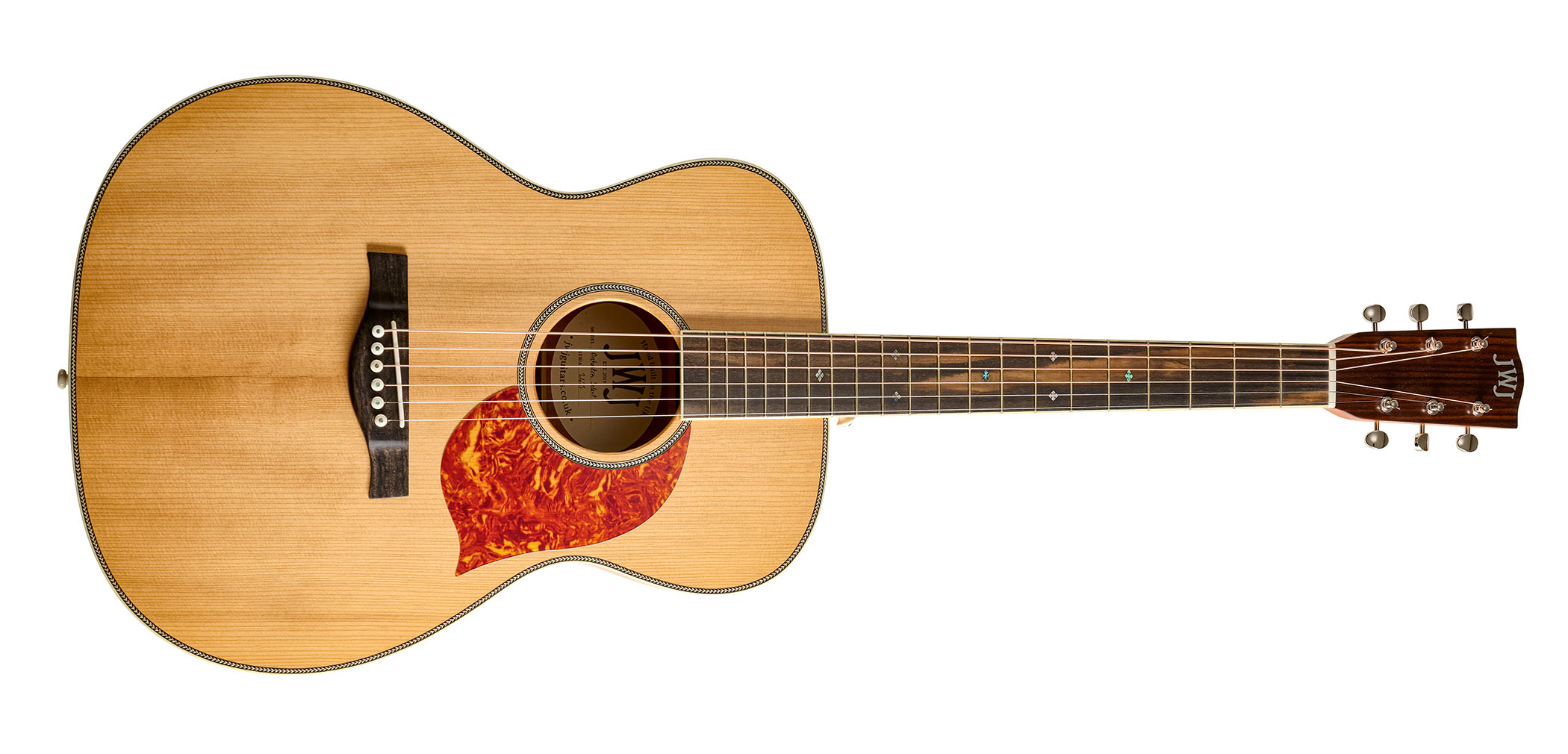
Price: $2,679 approx/£2,145 (inc case)
Origin: UK
Type: OM/000-sized acoustic
Top: Torrefied Adirondack spruce
Back/Sides: Honduran mahogany
Max Rim Depth: 110mm
Max Body Width: 386mm
Neck: Honduran mahogany
Scale Length: 632mm (24.9”)
Tuners: Kluson open back 18:1
Nut/Width: Bone/43.5mm
Fingerboard: African ebony
Frets: 20
Bridge/Spacing: African ebony with compensated bone saddle/57mm
Weight (kg/lb): 1.86/4.1
Options: LR Baggs Hifi Pickup £300, wide or slim neck profiles available on request
Range Options: See Parlour
Left Handers: Yes, no extra cost
Finish: Natural satin nitrocellulose
JWJ Slope Shoulder Select
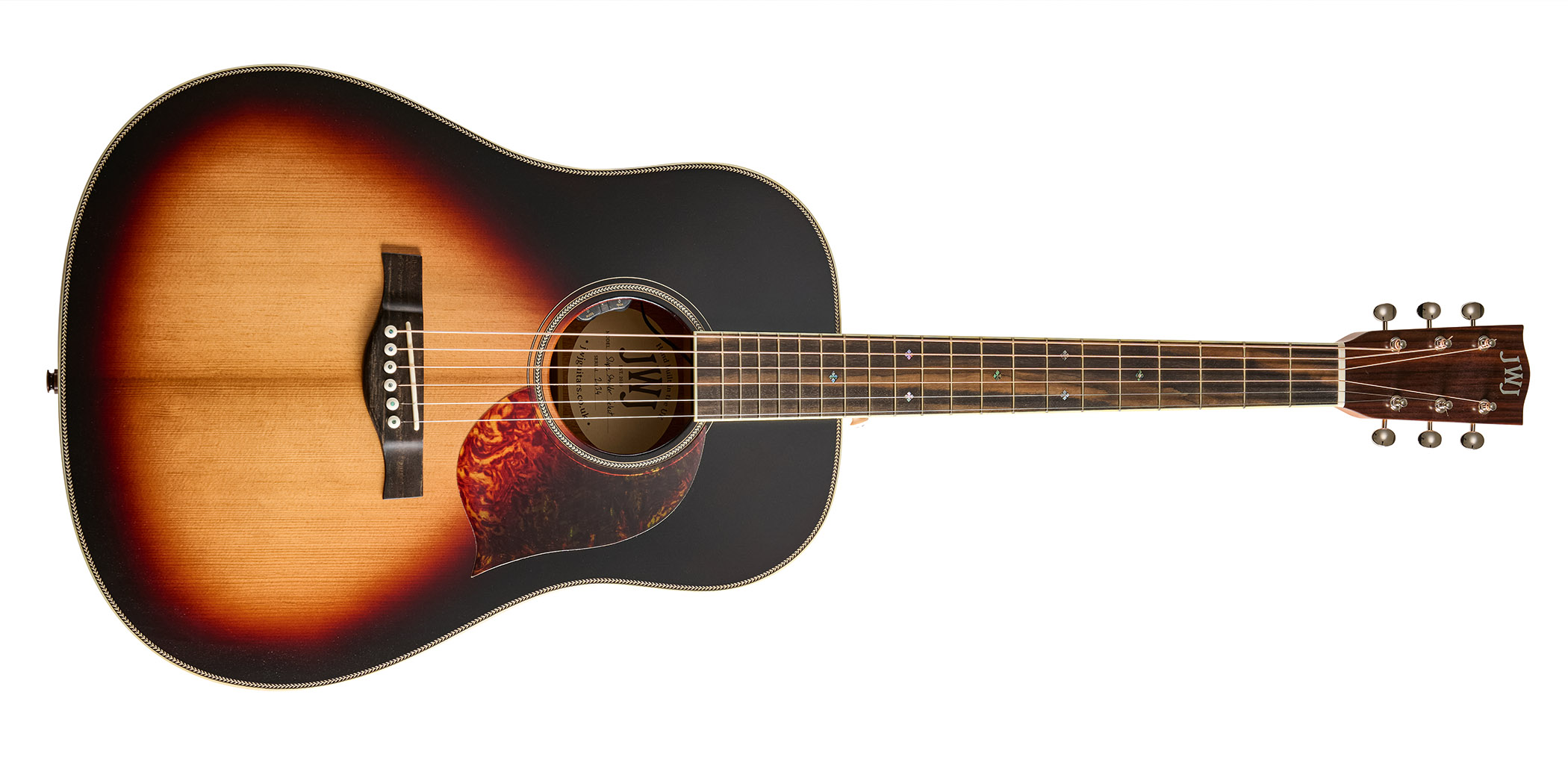
Price: $3,049 approx / £2,445 (inc case)
Origin: UK
Type: Slope shoulder dreadnought-sized acoustic
Top: Torrefied Sitka spruce
Back/Sides: Honduran mahogany
Max Rim Depth: 119mm
Max Body Width: 402mm
Neck: Honduran mahogany
Scale Length: 632mm (24.9”)
Tuners: Kluson open back 18:1
Nut/Width: Bone/43.5mm
Fingerboard: African ebony
Frets: 20
Bridge/Spacing: African ebony with compensated bone saddle/57mm
Electrics: LR Baggs HiFi pickup
Weight (kg/lb): 1.98/4.37
Options: Base price is £2,145; the price here includes the LR Baggs HiFi Pickup at £300 extra. Wide or slim neck profiles available on request
Range Options: See Parlour
Left Handers: Yes, at no extra cost
Finish: Sunburst satin nitrocellulose
Contact: JWJ Guitars
Hands-on videos
Coda Music
With over 30 years’ experience writing for guitar magazines, including at one time occupying the role of editor for Guitarist and Guitar Techniques, David is also the best-selling author of a number of guitar books for Sanctuary Publishing, Music Sales, Mel Bay and Hal Leonard. As a player he has performed with blues sax legend Dick Heckstall-Smith, played rock ’n’ roll in Marty Wilde’s band, duetted with Martin Taylor and taken part in charity gigs backing Gary Moore, Bernie Marsden and Robbie McIntosh, among others. An avid composer of acoustic guitar instrumentals, he has released two acclaimed albums, Nocturnal and Arboretum.
You must confirm your public display name before commenting
Please logout and then login again, you will then be prompted to enter your display name.
“While the odd corner has clearly been cut, these are true Gibsons with all the individuality that this brand exhibits”: Gibson J-45 Special and Hummingbird Special review
“Fender has stripped back the price – but has it gone too far paring back the sounds, too?” Fender Standard Acoustasonic Telecaster review
